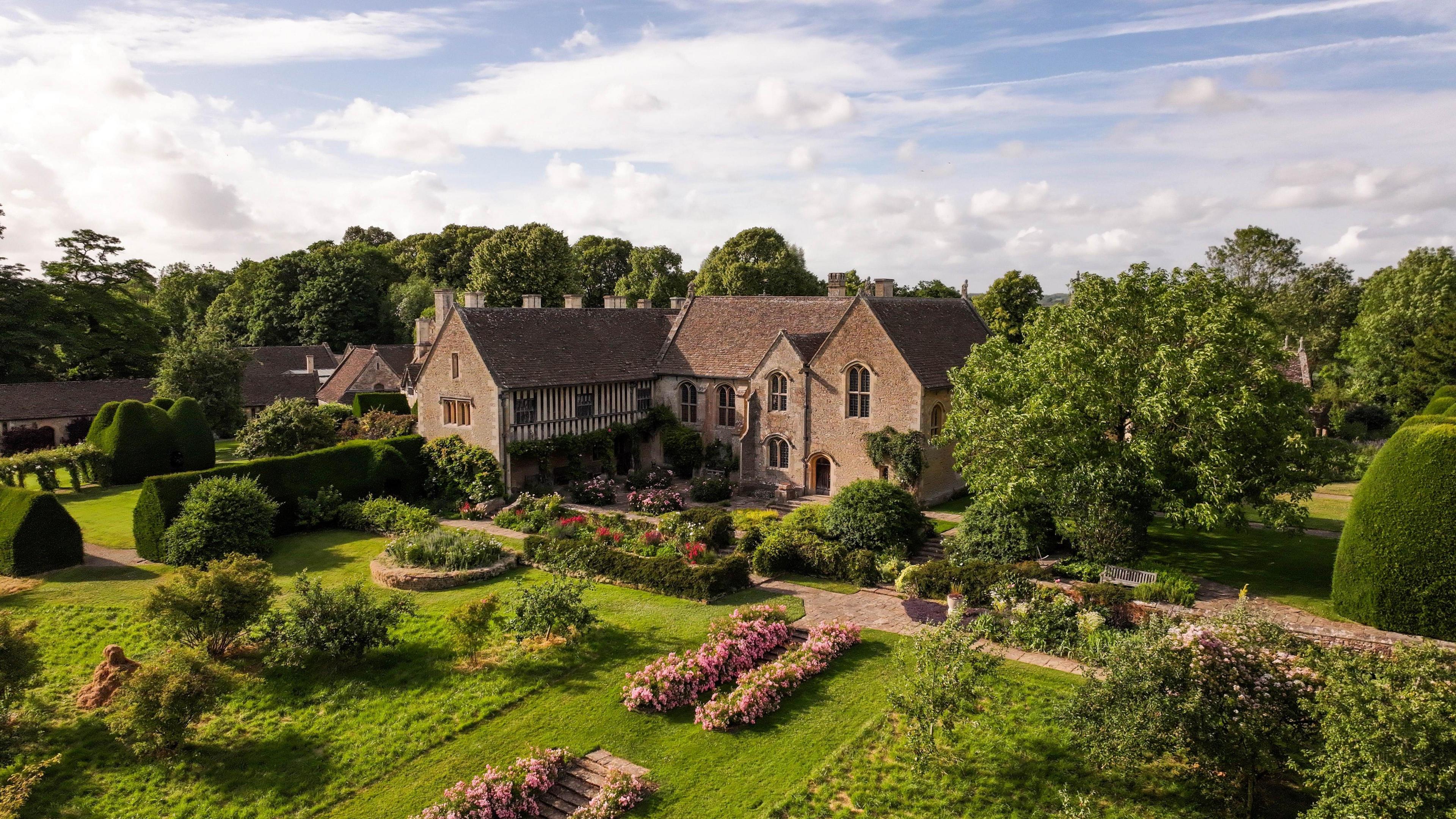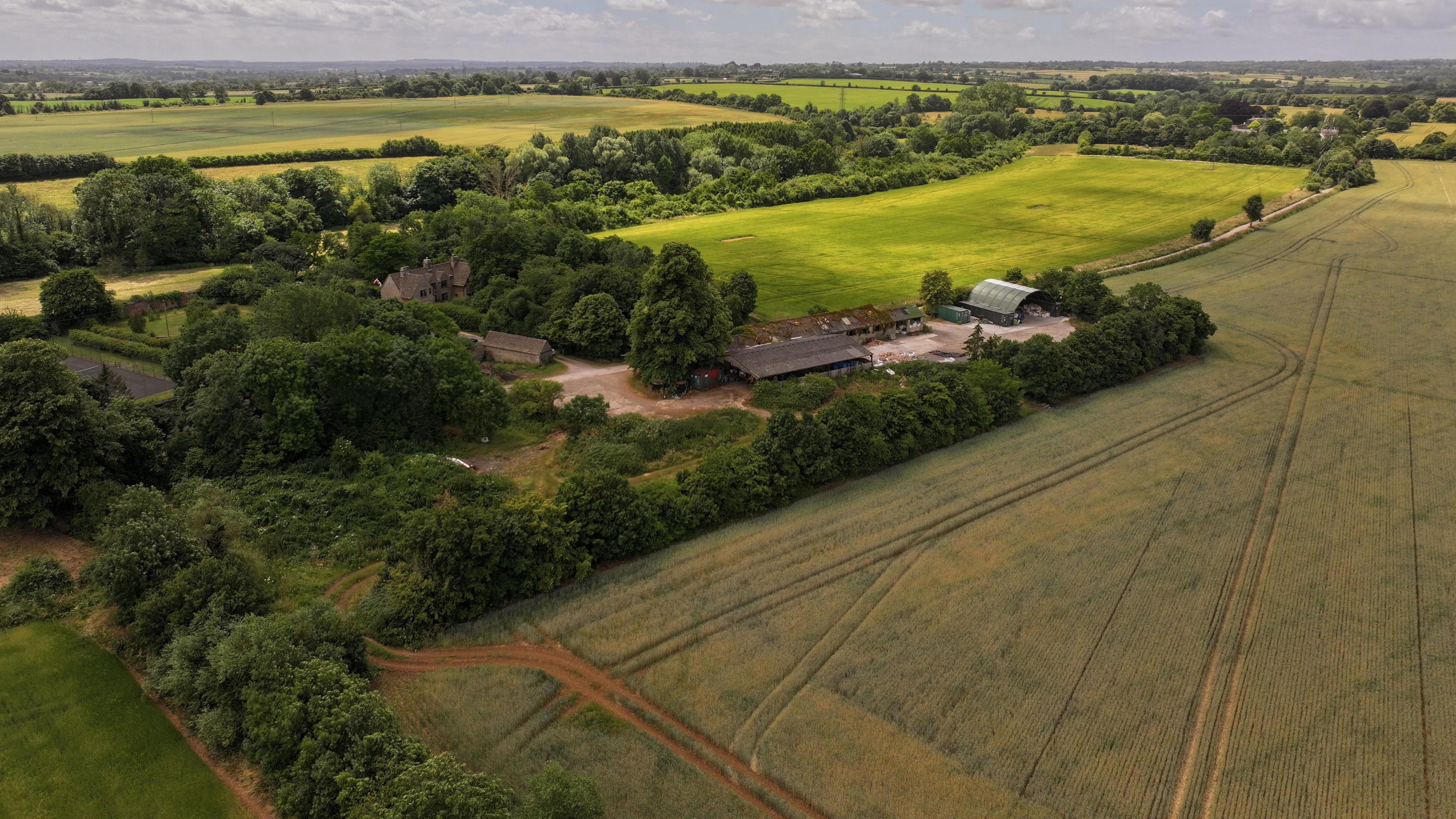Country manor to become regenerative farming hub

Around 20,000 people visit the medieval manor and garden each year, which has been in the care of the National Trust since 1943
- Published
The National Trust and Wiltshire Wildlife Trust are joining forces to transform a farm at Great Chalfield Manor into a hub for regenerative farming.
Through the partnership, more than 200 acres of arable and pasture land will be farmed for climate-resilient food production.
The medieval manor and garden each year, which has been in the care of the National Trust since 1943, attracts about 20,000 visitors each year.
Robert Floyd, who cares for the estate, says the partnership is a chance to create "positive interaction between nature and our farming communities".
The aim for the land is to develop a learning hub where farmers and landholders can learn how to create species-rich grassland and hedgerows, wood pasture, and ponds, and access new markets for environmental services.
A separate collaboration with the Great Western Community Forest will see 11,000 trees planted at the farm in a way that integrates them into the farming system as areas of woodland for climate resilience.
Robert Floyd currently cares for the estate with his wife Patsy. His late father Charles was one of the Wiltshire Wildlife Trust’s founders.
“My late father used to say - ‘It all starts with the plants’, so this is a wonderful opportunity now to create positive interaction between nature and our farming communities," he said.

Through the partnership, more than 200 acres of arable and pasture land will be farmed for climate-resilient food production
Wiltshire Wildlife Trust says it believes only farmers can lead the way to nature’s recovery in an agricultural county like Wiltshire, and restore species of farmland birds such as skylarks, yellowhammers, lapwing and grey partridge.
Joanna Lewis, the trust's chief executive, said: “One of our aims is to create a learning hub for nature-friendly farmers, showcasing how nature and trees can be an integral part of a regenerative farming system, and how green finance can help make that profitable too.”